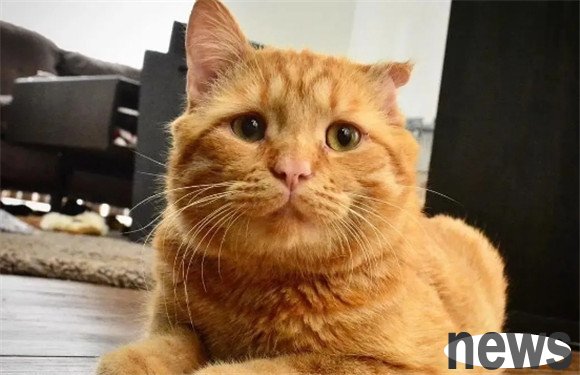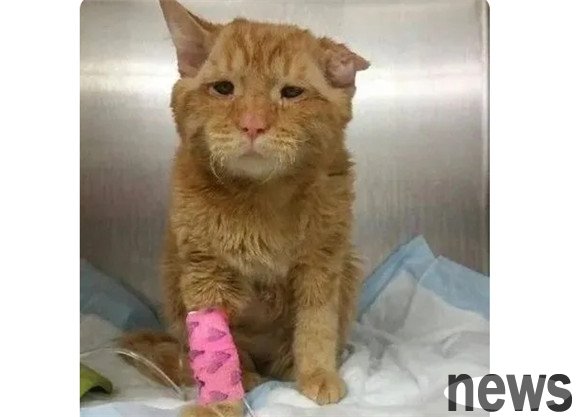"How to identify whether a cat is in pain?" has always been a major issue for the shovelers!
In addition to the fact that cats cannot be described directly to us in words, it is mainly because of their sensitivity, and they often deliberately hide their discomfort (pain and fright).
Cats' sensitivity comes from self-protection as "predators" in the wild. They cannot expose their weaknesses to natural enemies, so they are easier to survive. This requires us to have a golden eye to identify the pain manifestations of cats in a timely manner:
How to identify whether cats are in pain?

need to be judged comprehensively from the following three aspects:
▌Abnormal behavior
such as inability to fall asleep, mentally depressed, decreased appetite, frequent licking of painful areas, hiding in cat litter box or under the bed, urinating randomly, etc., may indicate cat pain.
In addition, when humans and cats interact, if they find that they touch a specific part of the cat, they will dodge, roar, and even attack such as scratching and biting. It is also very likely that they touch the painful part of the cat.
Picture from: Citation [2]/Chinese translation by Cat Research Institute
▌Abnormal facial expression
Cats have low heads and ears, half-open eyes, beards are pressed against their faces, narrow eyelid fissions, and frown expressions on their faces, which may indicate cats' pain.
Picture from: Citation [2]+[4]/Chinese translation by Cat Research Institute
Abnormal posture
Cats have stiff bodies, lying on their side, squatting with hens, arching backs, curling up, etc., which may be manifestations of pain.
When judging the posture, you can press the cat's back and legs with your hands to feel the degree of muscle tension. If the muscles are tense and the press becomes hard, it means that the cat is not relaxing. If you are "secretly using force" to defend and protect, it is likely that it is painful and discomfort.
How to determine the degree of pain in a cat?
The "How painful is it?" perceived by cats is affected by two aspects:
① Objective factors such as the type of disease effect, source, injured part and intensity;
② Subjective factors such as age, personality, pain perception and manifestation of the affected cat.
Objective scale example: Pain Management Small Animals" Pain degree grading.
is based on the human pain scale and combined with the observation of abnormal behavior of animals
, so there is no fixed standard for cat pain assessment. But in addition to observing the cat's expression and behavior (one-dimensional and two-dimensional), it is also necessary to have dynamic interaction with the cat (three-dimensional) to make the evaluation more accurate.
Interactional Assessment Example: Compound Multidimensional Postoperative Pain Assessment Scale at St. Paul State University. The higher the accumulated scores of the three tables, the more painful the cat is,
How to help the cat relieve pain?
▌For cats with acute pain, they should seek help from doctors in a timely manner and treat them in a targeted manner.
Acute pain is a pain caused by a specific injury or disease, which occurs when inflammation or wound heals (up to three months).
Not only should the treatment of the cause, but also pain medication should be given according to the pain area and cause.
Commonly used analgesics include: non-steroidal anti-inflammatory drugs, which are the most common antipyretic analgesics in clinical practice, and have good effects on muscle and bone pain (such as meloxicam); opioids are the most effective drugs for treating acute pain, and are often used in combination with sedatives (such as butorphinol).
▌Cats with chronic pain should also take good care of their homes based on medication intervention.
Chronic pain is mainly common in elderly patients with chronic diseases. Such as chronic gingivitis, periodontitis, degenerative joint diseases, kidney disease, tumors, and any disease that may cause chronic inflammation.
In addition to taking medicine and analgesic, it can also help cats improve their quality of life by improving their home layout and providing a quiet sleep environment...
Provide good environmental management for arthritis cats
Use painkillers for people, and do not feed the cats randomly!
▌First, don't use medicines indiscriminately
Personal analgesics such as ibuprofen, paracetamol, aspirin, etc., are non-steroidal anti-inflammatory drugs, and this type of drug has many taboos. Some are unknown in cats, while others are extremely low tolerated, which may cause gastrointestinal damage and kidney damage.
Even if the safety is guaranteed, similar drugs such as mexi and puerdin that are approved for use in cats need to be used after careful evaluation by the doctor.

▌But use medicine with caution ≠ drag and not use medicine
painkiller needs to be taken carefully as the doctor's advice, but it is not "if you can drag and you can, you won't need painkiller if you can."
All surgeries can cause pain, and anesthetics are not painkillers. When the effect of anesthesia fades, the pain will become more and more obvious. Once the pain is established, it is even more difficult to fight.
If the cat may experience pain, it should be prevented as soon as possible and cooperate with the doctor to re-evaluate it several times after the operation. Only by preventing pain can you better treat pain!